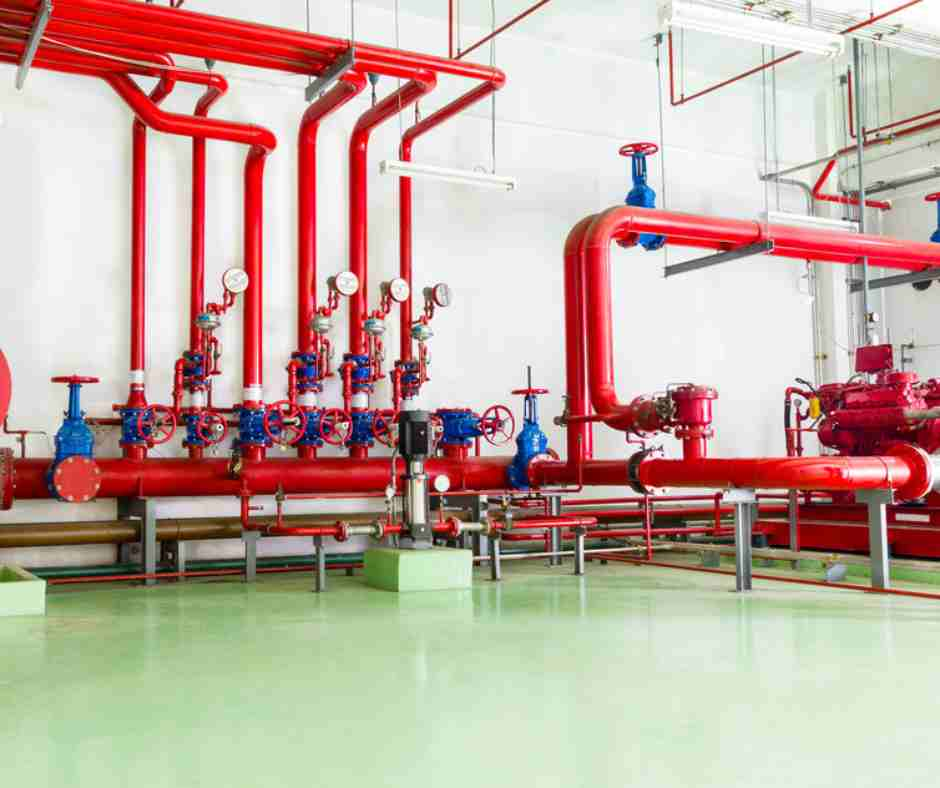Fire Protection Engineering in Building Design
Fire protection engineering plays a critical role in ensuring the safety of people, property, and assets within a building. It involves the application of engineering principles to prevent, detect, control, and suppress fires, reducing the risks associated with fire hazards. By incorporating fire protection systems and strategies into building design, engineers can create safer environments and minimize the potential damage caused by fires. This guide explores the fundamental aspects of fire protection engineering in building design, including key systems, regulations, and design considerations.
Understanding Fire Protection Engineering
Fire protection engineering involves the study and application of methods and technologies to protect people, property, and the environment from the destructive effects of fire. It encompasses both passive and active fire protection measures, which are implemented in the design and construction of buildings to ensure the safety of its occupants. Passive fire protection focuses on fire-resistant materials, structural elements, and compartmentalization, while active fire protection systems include fire detection, suppression, and alarm systems.

Key Fire Protection Systems in Building Design
1. Fire Detection Systems
Fire detection systems are designed to identify the presence of a fire in its early stages. These systems include:
- Smoke Detectors: Detect the presence of smoke, which is often an early indicator of fire. Smoke detectors can be ionization-type or photoelectric, each with its specific applications and sensitivities.
- Heat Detectors: Detect temperature rises above a preset threshold, indicating the possibility of a fire. They are often used in areas where smoke detectors might be less effective, such as kitchens or garages.
- Flame Detectors: Detect the infrared or ultraviolet radiation emitted by a fire. These are used in areas where fires may involve rapid flame growth, such as industrial settings.
2. Fire Suppression Systems
Once a fire is detected, suppression systems aim to control or extinguish it. Common fire suppression systems include:
- Sprinkler Systems: Automatic sprinkler systems are widely used in buildings to suppress fires. They consist of a network of pipes connected to sprinklers that activate when a certain temperature is reached. Sprinklers are effective in containing fires and minimizing damage.
- Water Mist Systems: These systems discharge fine water droplets, which absorb heat and suppress the fire. They are effective in areas with sensitive equipment or materials that may be damaged by large volumes of water.
- Gaseous Suppression Systems: These systems use gases like carbon dioxide, FM-200, or Inergen to suppress fires by reducing oxygen levels and preventing combustion. These systems are often used in computer rooms, data centers, and areas with valuable equipment.
3. Fire Resistance and Compartmentalization
Compartmentalization is a passive fire protection method that involves dividing the building into fire-resistant sections to contain the spread of fire and smoke. This can be achieved through:
- Fire-Resistant Walls and Doors: Fire-rated walls, floors, and doors prevent the spread of fire from one area to another, allowing more time for evacuation and minimizing the impact on other parts of the building.
- Fireproof Materials: The use of fire-resistant materials, such as concrete, steel, or gypsum, helps to protect structural components and reduce the risk of fire damage.
4. Emergency Egress and Evacuation Systems
Ensuring safe and efficient evacuation during a fire is paramount. Key components of egress and evacuation systems include:
- Emergency Lighting: Provides illumination in escape routes when power is lost during a fire, allowing people to exit the building safely.
- Exit Signs and Markings: Clearly visible exit signs guide occupants to designated exit routes. Marking escape routes with reflective or illuminated signs ensures visibility in low-light conditions.
- Evacuation Plans: Well-defined evacuation plans that consider building layout, fire hazards, and occupant mobility are essential. Regular fire drills help occupants familiarize themselves with escape routes and procedures.
5. Smoke Control Systems
Smoke control systems help to manage the movement of smoke within a building during a fire. These systems are designed to:
- Ventilate Smoke: Use mechanical ventilation to remove smoke from escape routes and the building’s interior.
- Contain Smoke: Use barriers to prevent the spread of smoke to other areas, allowing for safe evacuation and minimizing property damage.
Fire Protection Codes and Standards
Fire protection engineering in building design is governed by several codes and standards that provide guidelines and requirements for fire safety systems. Some of the most widely recognized codes include:
1. National Fire Protection Association (NFPA)
The NFPA is an internationally recognized organization that develops codes and standards for fire protection. Key NFPA codes include:
- NFPA 101: Life Safety Code: Provides requirements for building design, construction, and occupancy to ensure life safety during a fire.
- NFPA 13: Standard for the Installation of Sprinkler Systems: Specifies requirements for the design and installation of automatic sprinkler systems.
- NFPA 72: National Fire Alarm and Signaling Code: Sets guidelines for fire alarm systems, including detection, notification, and emergency communication.
2. International Building Code (IBC)
The IBC, developed by the International Code Council (ICC), provides a comprehensive set of regulations for building construction, including fire protection measures. It includes requirements for fire resistance ratings, fire suppression systems, emergency egress, and more.
3. Underwriters Laboratories (UL)
UL is an independent safety certification organization that tests fire protection systems and components. UL certification ensures that fire safety equipment meets specific performance standards and is suitable for use in various building applications.
Design Considerations for Fire Protection Engineering
When designing fire protection systems for a building, engineers must consider several factors to ensure the systems are effective and compliant with regulations:
- Building Type and Use: Different types of buildings have different fire protection requirements. For example, industrial facilities may require specialized suppression systems, while residential buildings focus more on smoke detection and emergency egress.
- Occupant Load: The number of people in a building influences the design of egress routes, fire alarms, and emergency lighting systems. Larger buildings with high occupancy require more extensive fire protection measures.
- Fire Hazard Evaluation: Understanding the potential fire hazards in the building, such as flammable materials, equipment, or chemical processes, is crucial in selecting appropriate fire protection systems.
- Building Height and Complexity: Tall buildings and complex structures require advanced fire protection strategies, including pressurized stairwells, smoke control systems, and fire-rated barriers to protect occupants and maintain safe egress.
- Maintenance and Testing: Regular inspection, testing, and maintenance of fire protection systems are essential to ensure their functionality in the event of a fire.
Fire Protection Challenges and Innovations
Fire protection engineering is an evolving field, with constant advancements in technology and techniques. Some current challenges and innovations include:
- Smart Fire Safety Systems: The integration of IoT (Internet of Things) technologies into fire safety systems allows for real-time monitoring, remote control, and predictive maintenance.
- Sustainability and Fire Safety: Designers are increasingly focused on using eco-friendly materials that are both fire-resistant and sustainable. Additionally, new technologies are being developed to create energy-efficient fire protection systems.
- Fire Safety in Complex Structures: As building designs become more complex with the use of glass, steel, and open-plan layouts, fire protection engineers face new challenges in ensuring effective fire control and evacuation.
Conclusion
Fire protection engineering is a vital aspect of building design, focused on preventing, detecting, controlling, and suppressing fires to protect lives, property, and assets. By integrating both passive and active fire protection measures, building designers can create safe environments that mitigate fire risks. Adhering to fire safety codes, implementing effective fire protection systems, and considering building-specific requirements are key steps in ensuring a building’s fire safety. As technology advances and new challenges emerge, fire protection engineering continues to evolve, providing innovative solutions to enhance safety and minimize fire-related risks.
 Boilersinfo Boiler and Mechanical Power Digital Library
Boilersinfo Boiler and Mechanical Power Digital Library





